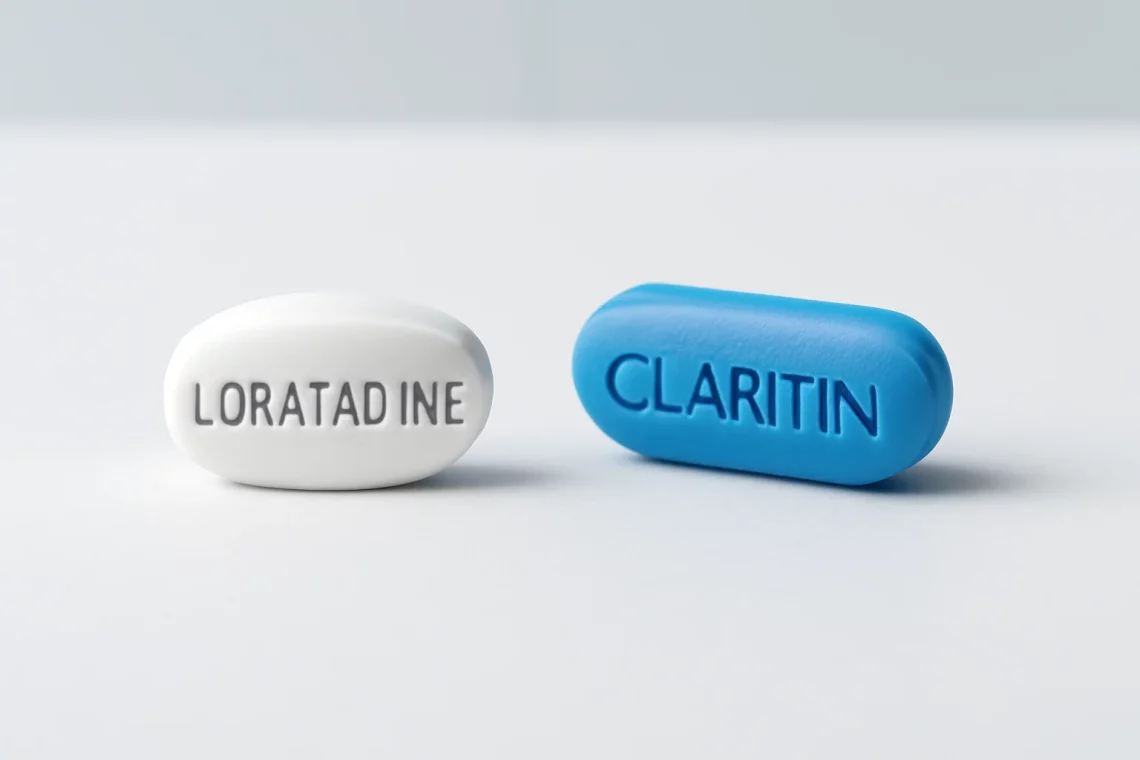
Loratadine vs Claritin: Key Differences You Should Know
Loratadine and Claritin are terms often used interchangeably in discussions regarding the management of allergy symptoms. For many, particularly those suffering from seasonal allergies or allergic rhinitis, understanding the nuances between these two names can be critical in making informed decisions about their health. As a second-generation antihistamine, loratadine has gained popularity for its effectiveness in alleviating allergy-related symptoms such as sneezing, runny nose, and itchy eyes. However, Claritin, which is a brand name for loratadine, has also carved out a significant place in the market, leading to some confusion among consumers about their differences.
The landscape of allergy medications is vast, with countless options available that promise relief from discomfort. However, loratadine and Claritin stand out due to their safety profile and non-drowsy formulation, making them appealing choices for those who need to maintain their daily activities without the sedative effects commonly associated with other antihistamines. Understanding what loratadine and Claritin are, how they work, and their potential side effects can empower individuals to better manage their allergy symptoms and make informed choices regarding their treatment options.
Understanding Loratadine
Loratadine is a widely used antihistamine that is primarily known for its ability to relieve allergy symptoms without causing significant sedation. As a second-generation antihistamine, loratadine was developed to minimize the drowsiness commonly associated with first-generation antihistamines. This quality makes it a preferred choice for allergy sufferers who require symptom relief during the day without the risk of feeling sleepy or lethargic.
The mechanism of action for loratadine involves the selective blocking of peripheral H1 receptors. When allergens enter the body, they trigger the release of histamines, which bind to these receptors and produce symptoms like itching, sneezing, and inflammation. By blocking this action, loratadine effectively reduces the physiological responses associated with allergic reactions.
In terms of dosage, loratadine is typically available in 10 mg tablets, taken once daily. It’s important to follow recommended dosages to avoid potential side effects, which may include headaches, fatigue, or dry mouth. However, these side effects are generally mild and transient, making loratadine a safe option for long-term use.
Loratadine is not only effective for seasonal allergies but is also used for chronic conditions such as hay fever and skin hives. Its long-lasting effects allow individuals to manage their symptoms throughout the day, providing relief without the need for frequent dosing. Additionally, loratadine is available in various forms, including liquid and dissolvable tablets, catering to different preferences and needs.
Overall, loratadine represents a significant advancement in allergy treatment, offering effective symptom relief with a favorable safety profile. Its non-drowsy formulation and long-lasting effects make it an essential option for those seeking to maintain their quality of life while managing allergy symptoms.
Claritin: The Brand Name
Claritin is perhaps one of the most recognizable brand names in the realm of allergy medications. It is important to note that Claritin contains loratadine as its active ingredient, meaning that when individuals choose Claritin, they are essentially opting for loratadine in a branded form. The popularity of Claritin has led to widespread recognition, and it is often the first choice for many when seeking relief from allergy symptoms.
The formulation of Claritin is designed to provide effective relief from a range of allergy symptoms, including sneezing, runny nose, and itchy eyes. Just like loratadine, it is a second-generation antihistamine that works by blocking H1 receptors, preventing histamines from triggering allergy responses. This mechanism allows individuals to enjoy a significant reduction in allergy symptoms without the drowsiness associated with first-generation alternatives.
Claritin is available in various forms, including tablets, chewable tablets, and liquid formulations, which provides flexibility for consumers. The standard dosing recommendation is typically one 10 mg tablet per day for adults and children over the age of six. It is essential to adhere to these guidelines to ensure maximum effectiveness and minimize the risk of side effects.
One of the significant advantages of choosing Claritin is its extensive availability and trust among users. Many people rely on it due to its proven efficacy and safety profile. Additionally, Claritin is often marketed as a non-drowsy formula, making it an ideal choice for those who need to stay alert and active throughout the day.
While Claritin is effective for most individuals, it is always advisable to consult with a healthcare professional, especially for those with existing medical conditions or those taking other medications. This ensures that Claritin is the right choice for their specific needs.
In summary, Claritin serves as a well-established brand of loratadine, providing the same benefits and effectiveness in managing allergy symptoms. Its reputation and availability make it a go-to option for many allergy sufferers seeking relief.
Loratadine vs. Claritin: Are There Any Differences?
When comparing loratadine and Claritin, the primary distinction lies in the branding rather than the formulation itself. As mentioned earlier, Claritin is simply a brand name for loratadine, meaning that both contain the same active ingredient and work through the same mechanism of action. Therefore, the effectiveness of both options is generally considered equivalent.
However, consumers may notice differences in pricing, packaging, and marketing. Brand-name medications like Claritin often come with a higher price tag compared to their generic counterparts. This can be a consideration for individuals who require long-term allergy management. Generic loratadine products may offer a more cost-effective solution while providing the same therapeutic benefits.
Additionally, the marketing around Claritin may create a perception of superiority or preference, leading some consumers to believe that the brand-name option is more effective. However, scientific evidence does not support this notion; both loratadine and Claritin perform similarly in alleviating allergy symptoms. The choice between the two often comes down to personal preference, availability, and cost considerations.
Another point of consideration is the availability of different formulations. While Claritin is widely available in various forms, generic loratadine may also offer similar options, including liquid and chewable forms. Patients should explore these options to find the most convenient delivery method for their needs.
In terms of side effects, both loratadine and Claritin share a similar profile, with drowsiness being rare in most users. Individuals may respond differently to the brand-name versus the generic, but this variability is often due to individual sensitivity rather than a significant difference in the medication itself.
Ultimately, whether one chooses loratadine or Claritin, they can expect similar outcomes in managing their allergy symptoms. The decision should be based on factors such as cost, availability, and personal preference rather than perceived differences in effectiveness.
Conclusion
In conclusion, loratadine and Claritin are essentially two names for the same effective antihistamine, providing relief from allergy symptoms without causing significant drowsiness. Loratadine is the generic name, while Claritin is the brand name, and both options work through the same mechanism to alleviate discomfort caused by allergens.
When choosing between loratadine and Claritin, individuals should consider factors such as cost, availability, and personal preference. Both options are safe for most users and provide effective relief, making them suitable for long-term management of allergy symptoms.
As with any medication, it is crucial to consult with a healthcare professional, particularly for individuals with existing medical conditions or those taking other medications. This ensures the right choice for individual health needs.
**Disclaimer:** This article is not intended as medical advice. Always consult with a healthcare professional for any health-related issues or concerns.




